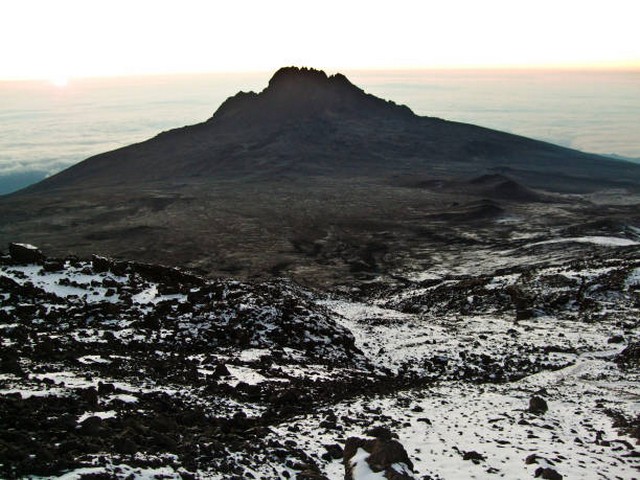How To Explore Kilimanjaro’s Nature Zones Safely
Kilimanjaro, the rooftop of Africa, stands majestically over the Tanzanian landscape, beckoning adventurers from around the globe to explore its majestic heights and diverse ecological zones. Each step on this mountain presents a different world of flora, fauna, and landscapes. Climbing Kilimanjaro is not just about testing your physical limits; it’s a journey through a mosaic of nature zones, each with its unique beauty and challenges. At Kilimanjaro Centre for Trekking and Ecotourism (KCTE), we specialize in guiding you safely through these zones, ensuring a transformative experience that resonates deep within your adventurous spirit. Let’s embark on a journey to learn how to explore Kilimanjaro’s nature zones safely and sustainably.
Understanding Kilimanjaro’s Ecological Zones
Cultivation Zone
At the base of Kilimanjaro, the Cultivation Zone is lush and fertile. Here, local communities grow coffee, bananas, and a myriad of other crops. This zone offers a cultural tapestry, showcasing the harmonious relationship between nature and human habitation.
Rainforest Zone
Ascending further, you enter the Rainforest Zone. This area is a humid, biodiversity-rich canopy of towering trees and chirping birdlife. It’s vital to maintain silence and minimize disturbances to preserve the ecosystem’s integrity.
Heath and Moorland Zone
As you climb higher, the landscape transforms into the Heath and Moorland Zone. This zone features a more open, shrubby environment with heathers and stunning lobelias. It offers panoramic views and is often enveloped in mist, creating a mystical atmosphere.
Alpine Desert Zone
The Alpine Desert Zone offers a stark contrast with its sparse vegetation and extreme temperatures. This zone tests your resilience with its rocky terrain and drastic temperature changes between day and night.
Arctic Zone
Reaching the summit zone, or the Arctic Zone, feels like stepping onto another planet. The oxygen-thin air and icy temperatures make this zone the most challenging yet exhilarating part of the climb.
Safety and Preparation Tips
Understand the Altitude
Kilimanjaro’s peak lies at about 5,895 meters (19,341 feet). Acclimatizing to the altitude is crucial. KCTE offers carefully crafted itineraries that allow for gradual acclimatization, increasing your chances of a successful summit.
Gear Up Correctly
Dress in layers to adapt to the changing temperatures. Waterproof boots, insulated jackets, and UV protection are must-haves. KCTE provides a detailed packing list to all climbers, ensuring you’re fully prepared for each ecological zone.
Stay Hydrated and Nourished
The physical exertion of climbing Kilimanjaro requires you to stay well-hydrated and nourished. Drink plenty of water and eat balanced meals. Our guides ensure that all climbers have access to clean water and nutritious meals throughout the journey.
Respect the Environment
Preserving the pristine nature of Kilimanjaro is a top priority. Stick to the trails, carry out all garbage, and respect wildlife habitats. KCTE is committed to eco-friendly practices to ensure the mountain remains untouched for future generations.
Know Your Limits
Listen to your body. Our experienced guides at KCTE are trained to monitor climbers for signs of altitude sickness and fatigue. Our team ensures that your health and safety are paramount, providing support and making necessary adjustments to your trek as needed.
Maximizing Your Kilimanjaro Experience
Choose the Right Route
Kilimanjaro offers several routes, each providing a unique perspective of the mountain’s diverse zones. From the popular Marangu and Machame routes to the scenic Lemosho and the challenging Umbwe, KCTE can help you select the route that best suits your experience and aspirations.
Capture the Moments
Photography is a profound way to capture the essence of your climb. Take time to photograph the unique flora and fauna and the breathtaking landscapes. Remember, the goal is to capture memories without harming the natural environment.
Engage with Local Culture
The journey to Kilimanjaro’s summit also offers a cultural voyage. Engage with local guides and porters and learn about their rich traditions and stories. KCTE promotes responsible tourism that respects and uplifts local communities.
Plan for Recovery
After summiting Kilimanjaro, plan a few days for recovery. Consider a safari or a beach getaway to Zanzibar with KCTE to complete your Tanzanian adventure. This allows your body to recuperate and gives you time to reflect on your achievement.
Why Choose KCTE for Your Kilimanjaro Adventure?
Kilimanjaro Centre for Trekking and Ecotourism (KCTE) is not just a tour operator; we are custodians of the mountain and ambassadors of its wonders. Our expert guides, comprehensive safety measures, and commitment to environmental preservation make us the ideal partner for your Kilimanjaro expedition.
FAQs
Q: What is the best time of year to climb Kilimanjaro?
A: The best times are during the dry seasons, from June to October and from December to March.
Q: How fit do I need to be to climb Kilimanjaro?
A: Climbing Kilimanjaro is physically demanding. We recommend that climbers engage in physical training prior to their trek.
Q: Can I climb Kilimanjaro solo?
A: For safety and environmental reasons, solo climbs are not allowed. You will be accompanied by KCTE guides and porters.
Q: What are the age restrictions for climbing Kilimanjaro?
A: Climbers should be at least 10 years old. There is no upper age limit, but older climbers should have a medical check-up before attempting the climb.
Call to Action
Ready to conquer the rooftop of Africa? Contact Kilimanjaro Centre for Trekking and Ecotourism (KCTE) today to start planning your unforgettable Kilimanjaro adventure. With our expert guidance, you’ll explore the mountain’s spectacular nature zones safely and sustainably. Join us and stand at the top of Africa, where the earth meets the sky, and your dreams meet reality.




